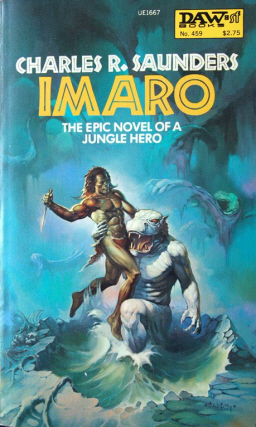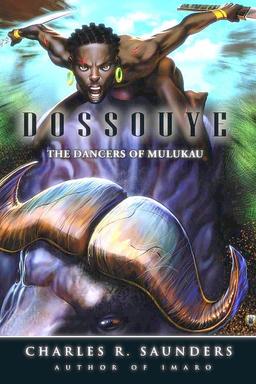Rogue Blades Presents: Charles, My Friend
The following is a memorial article from author David C. Smith for late author Charles R. Saunders.

Charles Saunders and I first began corresponding in 1977, when we were both writing for the semiprozines of the time. He wrote to me first, beating me to the punch, because I admired his work and had considered dropping him a line. As it turned out, I was privileged to know him for more than 40 years. I’ve lost count of the number of letters and emails we shared; unfortunately, all the early letters I received from him are now gone. I stored them in file folders in banker’s boxes that were destroyed when our basement flooded with 30 inches of water in 2001. I joked with him once about that: What will all the historians and fanboys do when they find out that I lost all your letters? There will be no history to write! He told me that he hadn’t held onto my letters, either, so we were even. We did not take it all that seriously. Now, of course, I regret the loss of those letters of his, as well as of his newspaper editorials, copies of which he sent me regularly.
Ironically, we never met in person, although we spoke on the phone just once. I called to bug him for the name and address of his producer at New Horizons, the Roger Corman outfit that had produced Amazons, based on Charles’s story Agbewe’s Sword. This was in 1986. I wanted to get my script Magicians at least read by someone in the business, and Charles was kind enough to help me make the contact, although of course nothing came of my effort.
I don’t recall much of what we discussed in those early letters; mainly it was back and forth musings about our stories, our hopes of seeing them published, and our shared interest in history, as well as our political and social interests, which were aligned. As time went on, we both had middling success with our fiction, seeing some of what we wrote appear as paperback originals. The botched debut of the original edition of Imaro in 1981 by DAW Books hit him hard, although for any of us who know his work, it felt absolutely correct to have Imaro in print from a corporate New York publisher. Imaro was followed by The Quest for Cush in 1984 and then The Trail of Bohu in 1985. And there ended the saga of Imaro, it seemed, at least for a time.
By then, Charles had moved to Halifax, Nova Scotia, from Ottawa, where he had gone in 1969 rather than be drafted to fight in Vietnam. He had been radicalized in the late sixties in Chicago, where he had associated with the Black Panthers — which, despite the image of them propagated by the FBI, were concerned primarily with doing good for, and fighting for justice in, African American communities. He had grown to maturity during days of rage in our country; although he was six years older than I, inevitably, our politics were of a kind: we believed in and supported progressive causes on both sides of the border, especially social justice issues. (In the 90s, a mutual correspondent of ours referred to “feminazis” in a letter to Charles. Imagine his reaction to that.) And he was, I believe, twice married and divorced, something else we had in common.
…

 Charles Saunders has posted a terrific short story over at
Charles Saunders has posted a terrific short story over at